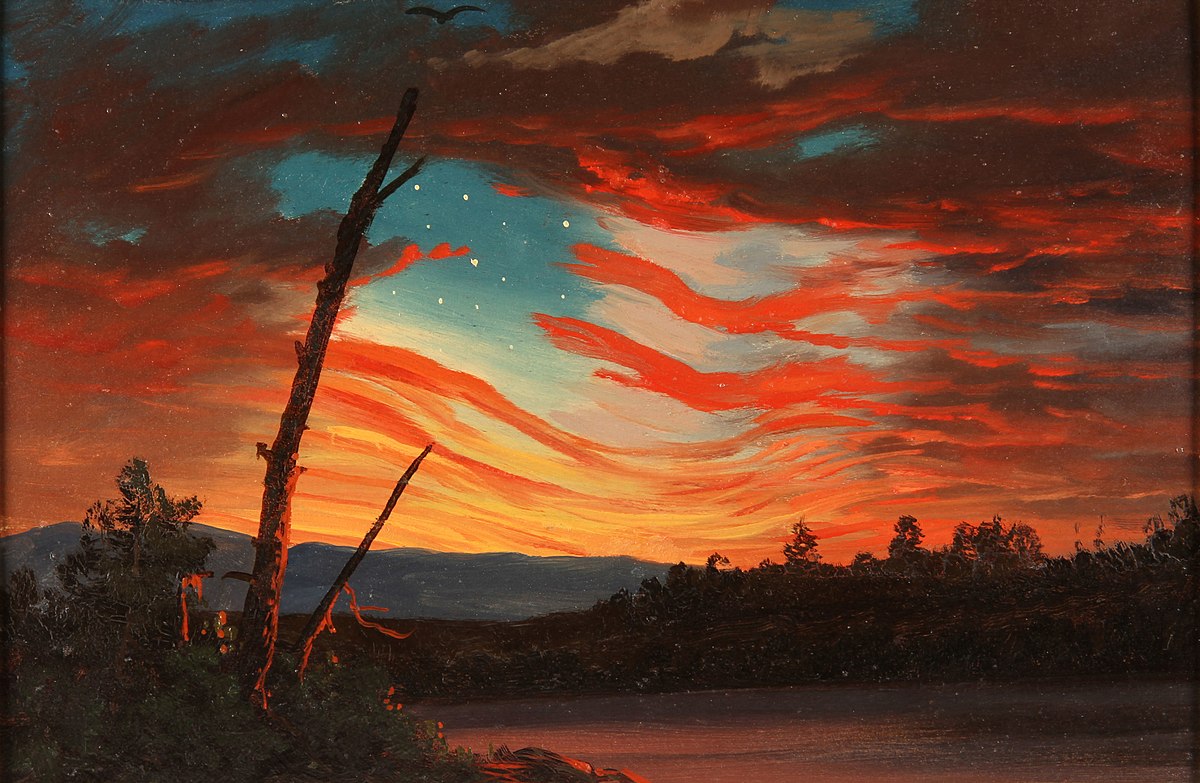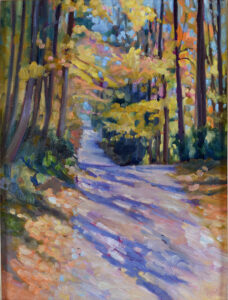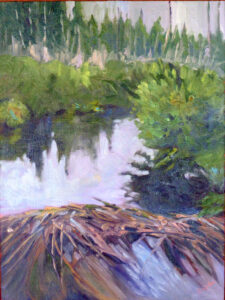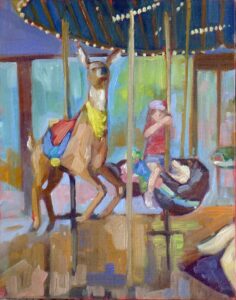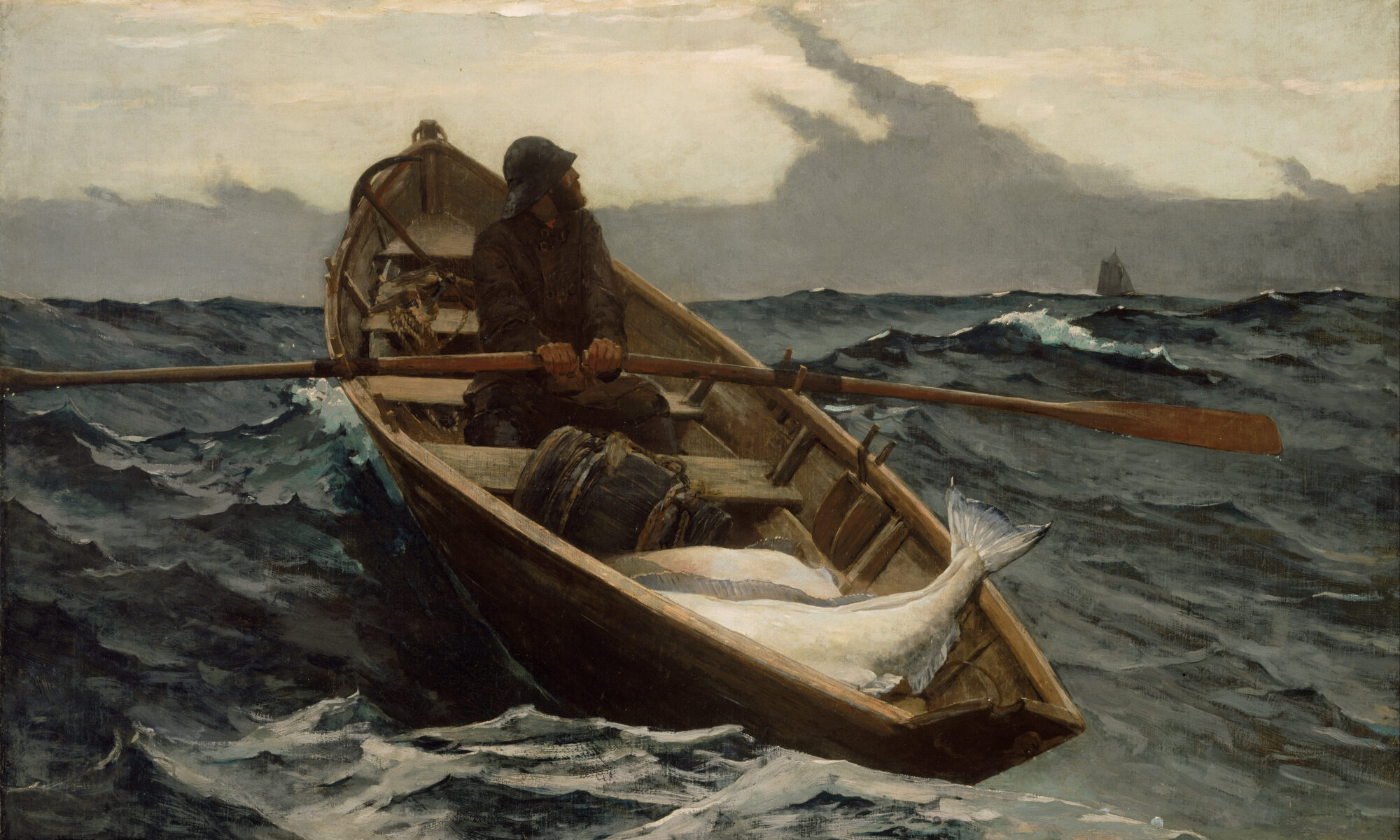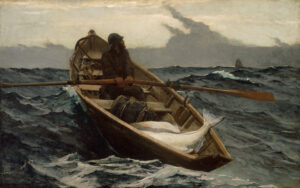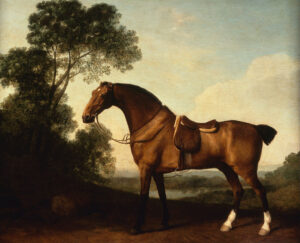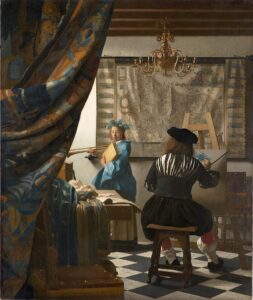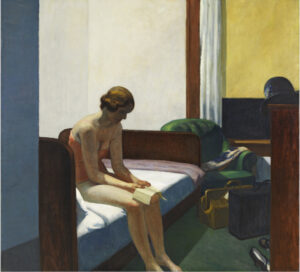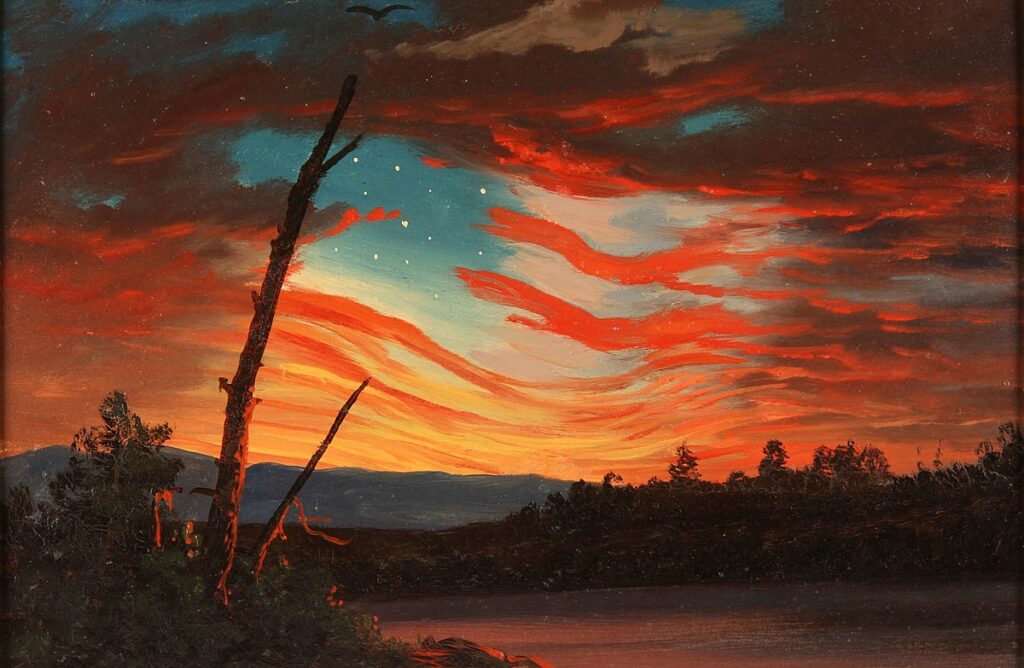
Normally on Fridays I introduce readers to one of my own paintings, but all day yesterday I was thinking of Frederic Church’s Our Banner in the Sky. It’s tiny compared to much of Church’s work: just 7.5X11 inches and done on paper. This is the same painter whose show-stopping The Heart of the Andes is a whopping 5.5X10 feet. Our Banner in the Sky is from the heart, and The Heart of the Andes was for the pocketbook. Both are wonderful, but they’re very different.
Church painted Our Banner in the Sky just weeks after the fall of Fort Sumter in 1861. The nation was electrified by the story of our flag being removed by rebel forces. At the time, nobody had any idea how the Civil War would play out.
Church was inspired by a sunset that glowed red, white, and blue. He took that as a sign that “the heavens indicated their support for the United States by reflecting the nation’s colors in the setting sun.” Whether or not you share his theology, it certainly points to a faith in the enduring nature of our country. That’s why I think it’s such an important painting for today.
Although I’m a lifelong reader of news, even I feel overwhelmed by politics these days—in Britain, which had a government-changing national election yesterday; in France, where Marine Le Pen’s National Rally has upended the status quo; and of course here, where last Thursday’s presidential debate suddenly shifted everything.
In my travels in England in May, strangers talked to me about their fears for American democracy. These are sentiments I’ve heard here as well.
In two years, we’ll be celebrating our national semiquincentennial. (That amazes me, since I vividly remember our bicentennial in 1976.) In the 248 years since our founding, we’ve suffered small rebellions, a full-blown Civil War, multiple economic depressions, two world wars, and 9/11. None of these were pleasant, but our nation endured. Our social compact is stronger than we credit. As long as we continue to love our fellow citizens, that will continue.
Frederic Church did not know the flag would be returned to Fort Sumter a week after Lee’s surrender at Appomattox; his painting was an act of faith. I pray we continue in that.
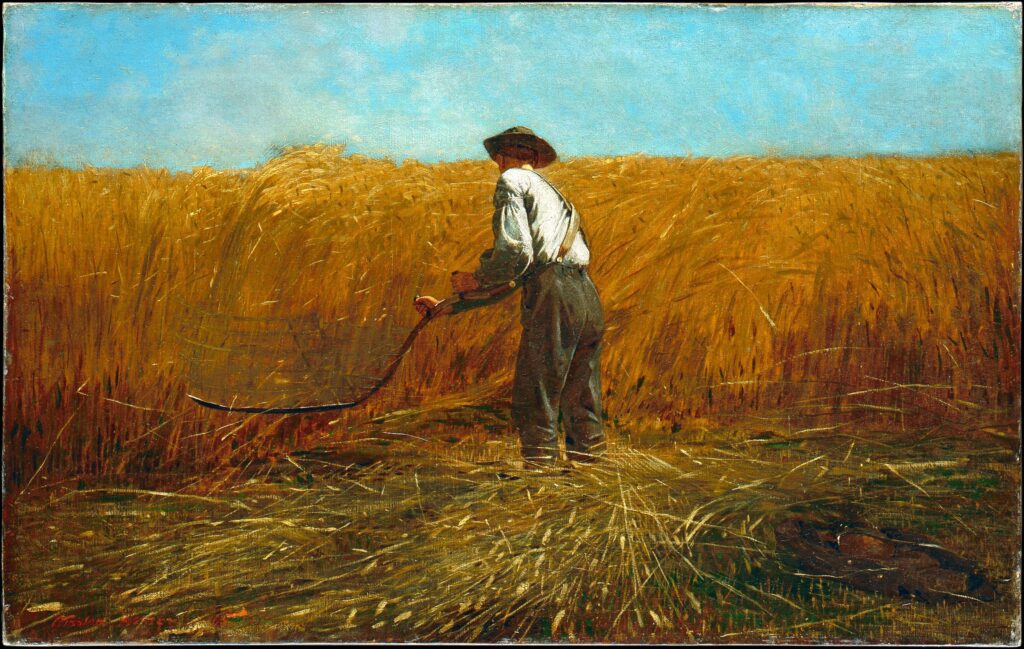
Reserve your spot now for a workshop in 2025:
- Advanced Plein Air Painting, Rockport, ME, July 7-11, 2025.
- Sea and Sky at Acadia National Park, August 3-8, 2025.
- Find Your Authentic Voice in Plein Air, Berkshires, MA, August 11-15, 2025.
- Immersive In-Person Fall Workshop, Rockport, ME, October 6-10, 2025.

